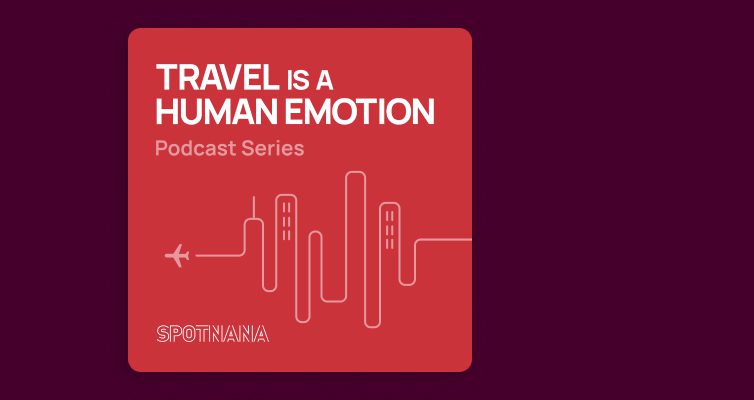Why flawed online booking tools are the status quo in corporate travel

Online booking tools (OBTs) helped bring business travel into the internet age by allowing travelers to book business trips on their computers instead of via a travel agent or ticketing office.
What was groundbreaking in the mid-90s, however, has now become dated. Most OBTs are built on legacy technology and processes, making it exceptionally difficult to improve their features and capabilities to match traveler expectations. New players are emerging to solve problems created by decades-old infrastructure with modern technology.
Here is a brief summary of the history of OBTs, their limitations, and how new platforms address entrenched problems caused by legacy technology.
The history of OBTs
In the pre-internet era of travel, everything was handled offline. Travel management companies (TMCs) and corporate travel departments (CTDs) handled travel by phone, and the major airlines operated hundreds of ticket offices in cities around the globe.
In 1995, the Internet Travel Network (ITN) launched the first online booking tool, later rebranded as GetThere. ITN first built its tool on global distribution system (GDS) technology to fulfill a single function: let business travelers book trips via the internet. Only later, through relationships with corporate clients like Texas Instruments, would GetThere be adapted to the needs of business travel.
Moving travel to the internet ushered in the era of electronic tickets. E-tickets, which overtook paper tickets within a few short years, allowed travelers to print tickets from a computer instead of calling a travel agent.
The booking tool acted merely as an interface, however; travel ticketing and servicing still had to be fulfilled by agents. Business travelers looking to change or cancel a trip also needed to contact a travel agent at their company’s TMC. At the same time, online booking and trip management tools couldn’t automatically reflect changes made by the agent after booking.
This discrepancy between what was visible through the OBT and the agent desktop created the concept of online and offline channels in corporate travel. For most OBTs, this channel divide persists today.
What happened to GetThere?
Sabre acquired GetThere from ITN in 2000 for $757 million. By that time, other players had emerged, including Serko Online, e-Travel, Deem (previously known as Rearden Commerce), and Outtask, which would later get acquired by Concur. It became clear that booking online was the future and everyone wanted to be part of the journey.
The limitations of OBTs
OBTs were built to solve an immediate problem: getting travel onto the internet. At the time, nobody at ITN or its competitors were considering just how much travel and travel retailing would change in 30 years.
With that in mind, it’s best to think about the original OBTs less as brand-new technologies and more as a series of creative workarounds and custom scripting designed to compensate for the shortcomings of existing technologies like the GDSs.
The companies that built most of today’s OBTs are 30 years old and still leverage technology that’s now 50 to 60 years old. This foundation makes it difficult for established OBTs to meet the demands of modern travel. Some of the major pain points of today’s OBTs include:
Missing content
Given that OBTs were built on the GDSs, it’s not difficult to see why they’re still very reliant on GDS content. There are major gaps in what’s available through GDSs, though.
Even if your OBT is getting content via a major GDS (Amadeus, Sabre, Travelport, or Travelsky), you still won’t be able to access flight and hotel options from specific suppliers and in certain parts of the world.
Low-cost carriers and independent or long-stay hotel properties are also conspicuously absent from the GDSs. Most corporate travel programs access LCCs and independent hotel content through aggregator APIs. This layering of APIs, however, complicates the ability of TMC agents to provide itinerary support, which we’ll get into in the next few sections.
Most of today’s OBTs also haven’t addressed the demands of IATA’s New Distribution Capability (NDC). OBTs may not be able to display NDC fares or show NDC and traditional GDS EDIFACT fares side-by-side. This makes comparison shopping impossible for the traveler.
Finally, OBT content is vulnerable to TMC biasing. A TMC can configure corporate booking tools to prioritize content that pays a commission to the agency. The practice leads to companies paying more for flights or hotels and undercuts a company’s ability to deliver on volume commitments made to suppliers in exchange for discounted fares and rates.
Limited self-service capabilities
Delays and cancellations are fundamental to travel. With traditional OBTs, however, business travelers can’t make self-service changes and cancellations on their own in most circumstances. Instead, they’re required to call an agent for assistance.
The need to contact an agent for even minor itinerary adjustments puts strain on travelers and on TMCs, which have struggled to provide customer support since the pandemic. According to Global Business Travel Association and Spotnana research, 48% of travel managers said TMC agents/assistance is their biggest TMC pain point. Furthermore, 69% of travel managers said their TMC call center wait times were longer than in 2019.
Another issue highlighted by the pandemic is the need for travelers to be able access and use unused air ticket credits through their OBT. Companies can lose thousands or even millions on unused ticket vouchers, as was the case post-COVID.
Lack of self-service travel policy configurations
Most OBTs use a rigid policy engine that doesn’t allow admins to configure travel policies for select users, groups, departments, offices, and situations.
When a company travel policy doesn’t suit the needs of travelers, particularly road warriors, they’ll either book outside the OBT or spend substantial time gaming the system to get to the options they want.
Aggravating the policy problem is the inconsistency between online and offline channels. A traveler booking with an agent might encounter a different policy than the one enforced via the OBT. Some agents, as well, may not have access to the policy guidelines for travelers from another country or office location.
Geographic silos
It’s rare for even the most mature corporate travel programs to use a single online booking tool. Instead, most global firms maintain multiple OBTs across their company. Those OBTs also need to be configured and maintained on a country-by-country basis because of the local servicing model of TMCs.
Maintaining multiple OBTs and configuring them for each individual country leads to siloed information around traveler profiles, content availability, policy rules, and data analytics.
Poor user experience
Business travelers have long lamented the dated user interfaces of corporate booking tools. While the consumer travel shopping experience continues to evolve with better visuals, the enhanced ability to filter, and ever-improving personalization, corporate OBTs feel stuck in 2007.
In a GBTA study from earlier this year, nearly half of travel managers said the end-user/travel experience was their biggest OBT paint point. This finding points to frustrations with current OBT technology and TMCs’ ability to deliver traveler support.
Divisions between online and offline
Today’s business travelers either book online themselves using the OBT or they book offline with an agent using completely different tech stacks, access to content, and policies.
The difference between what a traveler can see and book and what an agent can see and book creates headaches for travel managers and confusion for the traveler.
If an agent needs to step in to service an itinerary—which they very often do for legacy technology—the agent won’t be able to help unless they’re using the same point of sale used by the traveler.
Online and offline silos have been particularly relevant in the discussions around NDC adoption. Some companies access NDC fares in their OBT via API integrations. Yet, the challenge remains in how to service these fares in a post-ticketing environment.
Weak transition to mobile
Booking and managing a trip on a mobile device has been the norm in business travel for nearly a decade. Travelers are used to solving problems on the go with their phone or tablet.
Today’s OBTs, however, have yet to properly transfer the full capabilities of their desktop booking tools over to mobile apps. Often, OBT mobile apps don’t share the same content, profiles, and data as the full web versions of the tools. Additionally, some OBTs require multiple apps or services to book and display a complete trip to travelers, leading to a poor user experience and increased traveler friction.
The evolution of Travel-as-a-Service Platforms
The shortcomings of traditional OBTs are just one of the reasons why it’s time for the industry to transition to Travel-as-a-Service. Spotnana has pioneered a next-generation cloud-based corporate travel platform that delivers unparalleled travel experiences. We’ve created far more than an online booking tool.
Here’s what Spotnana delivers:
Modern infrastructure
Spotnana’s platform uses a microservices-based architecture, which structures an app as a variety of distinct services that are loosely coupled, independently deployable, and organized around the functional capabilities of a product.
In the most non-technical sense, think of it like building a block out of LEGO blocks instead of a single block of stone. We can work modularly, making changes to a single block or scaling the tower quickly by adding more blocks. It’s easier and faster to fix or improve an individual block without having to take down the whole tower and rebuild from the ground up.
Key elements of Spotnana’s architecture include:
System of Record
Our proprietary System of Record replaces the 30-year-old GDS passenger name record (PNR) order system used in the travel agency mid-office, which is notoriously error-prone and requires manual work and extensive scripting to automate workflows. Spotnana uses structured data with integrated API access that is extensible, meaning it’s easy for third-parties to build on top of and integrate with. Our new order management system enhances data quality and efficiency, making it simple to integrate the platform with other technology.
Content Engine
This collection of microservices takes in content from any source and breaks it down into data elements (fare price, fare rules, amenities, etc.) that are stored in Spotnana. The data is then delivered to other microservices as needed. This allows us to display NDC fares next to EDIFACT-based fares, a wide variety of hotel content from OTAs and aggregators, and more.
OBT and Agent Desktop
Spotnana’s OBT and Agent Desktop use the same underlying platform. Agents can easily access the same content, profiles, and policies as the traveler in real time. Agents can deliver more personalized service and travelers enjoy quicker issue resolution.
Access to comprehensive global content
Spotnana uses a content agnostic architecture. That means travelers can see all the available inventory from GDSs, NDC connections, online travel agencies (OTAs), low-cost carriers, and other sources.
Additionally, the content is unbiased. Results won’t sort or hide content in a way that makes it challenging to find the best option. Travel managers have control over what suppliers or types of travel an employee can book. We deduplicate matching fares and rates that appear across multiple content sources so travelers only see the cheapest possible price for each option.
Travelers don’t need to shop around or second-guess what’s available in the tool.
Advanced self-service options
Spotnana empowers travelers to take trip management into their own hands. It’s easy to change trip dates, flights, locations, seats, rooms, car types, loyalty program numbers, TSA numbers and more without agent support.
Spotnana’s superior automation and data management also solve other self-service snags, like unused ticket management. Throughout the flight booking process, travelers can view and redeem unused ticket credits, potentially saving companies thousands. Travel managers can also access a detailed report to track the volume and value of unused ticket credits.
Integrated traveler support within a unified global platform
Spotnana’s cloud-based infrastructure eliminates the silos between online and offline bookings. Travelers and agents use the same platform with a single backend.
Breaking down the online-offline barrier means that agents using Spotnana can support travelers from any location, accessing profiles, policies, and trips in real time. Agents can deliver personalized service and resolve problems quickly. Plus, the issue of inconsistent policy enforcement goes away, with travelers and agents working from the same policy rules.
For travel managers, this makes tracking travelers, adjusting policy, and analyzing spending and behavior, easier.
Want to learn more about how you can say goodbye to the legacy tools of the past and adopt Travel-as-a-Service? Contact us for a demo.







